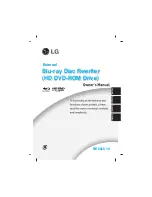
2
E M E R G E N CY L E D D R I V E R :
I N S TA L L AT I O N A N D O P E R AT I N G I N S T R U C T I O N S
WWW.HATCHLIGHTING.COM • 7821 W
OOdLANd
C
eNTer
B
Lvd
. T
AMpA
, FL 33614 • pH: 813.288.8006 • FX: 813.288.8105 • S
ALeS
@
HATCHLIGHTING
.
COM
r
ev
: 07/23/2020
INSTALLATION
Before beginning installation, verify the following:
a. Read and understand all warnings and notes stated on page 1 before proceeding with installation.
b. Verify the contents of the LED Emergency Driver installation kit contain the parts listed on page 1.
c. Make sure the emergency driver characteristics match those of the fixture it is intended for installation with:
• Verify that the existing LED driver is Class 2 compliant per the driver manufacturer specifications.
• The fixture’s driver must have an output power equal to or greater than the intended emergency driver.
• The fixture’s LED load voltage must be between 20-60V.
• The fixture’s LED driver maximum output current must be less than 3A.
• The fixture’s LED driver input current must be less than 0.66A.
d. Install in accordance with national and local electrical codes.
Mounting
Single-piece ELP emergency drivers are suitable for mounting on or adjacent to the fixture. Flex conduit A carries the emergency LED driver
mains leads and the LED +/- leads. Connect flex conduit A from the emergency driver to a knockout on the fixture. Flex conduit B carries
the battery connector leads and the test switch leads. Connect flex conduit B to a separate knockout in the fixture if the test switch will
be installed in the fixture, or to a junction box external to the fixture if the test switch will be used on a wall plate. Do not mate the battery
connectors until after power is applied.
For remote mounting of the emergency driver, the maximum recommended mounting distance is listed below. Remote mounting may result in
power loss at the load, reducing the total lumen output.
Part Number
Rated Output Power
Maximum Mounting Distance
ELP20-2060-UNV
20W
28 ft
Part Number
Rated Output Power
Nominal Lumen Output*
ELP20-2060-UNV-SD
20W
2000 Lumens
*Nominal lumen output assumes fixture efficacy of 100 lumens/watt.
NOTE: Verification of these operating traits does not constitute a code-compliant emergency egress system. While the ELP-2060 Series
has been found compliant with the requirements of UL 924, it is still the responsibility of the Designer/Specifier to assume appropriate light
levels are achieved during emergency operation of the luminaire in accordance with Federal, State and Local municipal code regarding path of
Egress Illumination.
Calculating Lumen Output During Emergency Operation
Evaluate luminaire/fixture data
DesignLights Consortium®
1. Log onto the DLC website (www.designlights.org).
2. Click on “search the DLC Qualified Product List” button on the DLC homepage.
3. In the “search by keyword” box enter: luminaire manufacturer and part number.
4. Click on “Search” tab to open the “Qualified Products List.”
5. Determine per “RATED DATA” efficacy shown in lumens per watt (lm/w).
6. Multiply lumens per watt by ELP-2060 rated output (example: lm/w x 10 watts). Refer to table below for the wattage of the specific
ELP-2060 model to be used in the luminaire. (lm/w) x (ELP-2060 watts) = nominal lumen output of fixture.
Determining Adequacy of Means-of-Egress Lighting Levels
Follow industry standards by utilizing available .ies files and lighting design software for your dedicated emergency luminaires with the above
calculated lumens and validate your as-installed plans in accordance with the applicable life safety codes governing your project.





















